The idea of a Jewish Institute for Technical Education in Palestine (1901-1921)
The call to found a Jewish university was made at the Fifth Zionist Congress in Basel in 1901, with Theodor Herzl as the spokesman for this educational idea.
A report drawn up under the direction of three important Zionists, Martin Buber, Berthold Feiwel and Chaim Weizmann, confirmed Herzl’s call for the founding of a university. Although none of the authors had a technical background, they recommended the establishment of a technical university instead of a humanities university. They argued that anti-Semitic laws had for many years denied Jews admission to a technical education at European universities and drew up a plan for a technical center (in Hebrew “Technion”) that would train young men and women in technical and agricultural professions.

Theodor Herzel at the Zionist Congress in Basel, Copyright Govern. Press Office D131-027
Palestine had almost no infrastructure at the time the Technion was founded. This dilemma was to be resolved through private initiative, the expansion of a school system in Palestine geared towards technical professions and its crowning achievement, the establishment of the Technical University in Haifa. Around 1880, there were approximately 26,000 Jews living in Palestine. For centuries, they have made up around a tenth of the total population.
In the middle of the 19th century, a lively building and development activity developed, accompanied by a modern school system. From 1882, the “Alliance Israélite” from France set up schools in the cities of Jaffa, Haifa, Safed and Tiberias, where Hebrew, Arabic, Turkish and French were taught. They were followed by similar efforts in other European countries.
It was hoped that the planned university building would provide the local population with a sound education in middle and higher professions, which was also in the interests of the donors of such a project. The aim of Germany, or rather the German government, was to spread Germanness abroad and expand trade relations. The German-Jewish donors were more concerned with providing help and protection to their co-religionists in the Orient.
Unlike the “Central-Verein deutscher Staatsbürger jüdischen Glaubens” (CV) and the “Zionistische Vereinigung für Deutschland” (ZVfD), the “Hilfsverein der Deutschen Juden”, which was responsible for the Technion, was a Jewish philanthropic association for helping Jews abroad. At the request of the association, the German government made an attempt to support the university project with the then Sultan of the Ottoman Empire. As this was not heeded, the emperor withdrew from a second attempt at support out of concern about a possible decline in trade relations.
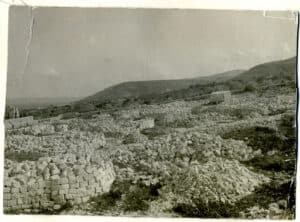
Technion property around 1912
In order to put the project on an independent footing, a separate company was founded on the premises of the aid organization in Berlin: the “Jewish Institute for Technical Education in Palestine”. Dr. Paul Nathan, managing director of this company and the driving force behind the university project, travelled the Ottoman Empire for four months to find a suitable building site for the technical institute in Palestine. In 1908, he calculated the costs for the planning and construction of the university at an estimated 690,000 Frs. This corresponded to a sum of approx. 550,000 marks.
Dr. Paul Nathan summarized his findings as follows:
- To date, there are three institutes for higher studies in the Orient, two Protestant American colleges in Constantinople and Beirut and a Catholic university in Beirut.
- The subjects taught there consist of humanities and commercial sciences, as well as law and medicine. No modern technology can be studied in the country. However, the country’s development is clearly dependent on this. This applies to the development of both the Ottoman Empire and Palestine.
- The training of technical specialists is important insofar as the Jews are familiar with the Turkish language and would be preferred by the Turkish authorities over other – possibly technically better trained – specialists from Europe.
- By employing Jewish technicians, an increasing number of Jewish workers would also find employment.
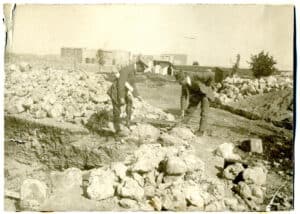
Construction site of the Technion ca. 1912
The pedagogical concept as a prerequisite for successful training up to technical studies included:
- Kindergarten: as a foundation according to the Pestalozzi-Fröbel method.
- Elementary school: learning Hebrew as a common language for all Jewish children in accordance with the modern Hebrew language developed by Eliezer Ben-Yehuda around 1900.
- Secondary school: The following courses were offered for a comprehensive education
– Arabic, Turkish, German and English and French as foreign languages and languages of the sponsoring countries);
– thorough instruction in arithmetic and mathematics, science and drawing,
– practical workshop lessons from an early age. - In the higher technical college, particularly talented young people were to receive a 3-4 year course of study, while the others were to be trained for a career in the trades.
Supplementary lessons in mathematics and certain natural sciences were offered in advance as preparation for admission to the course. In addition, the languages were deepened;
– Hebrew as a religious-national binding agent,
– Arabic for general communication,
– Turkish for the civil service,
– English for professional advancement in Egypt,
– German for future employment as an engineer on the railroad lines built with German capital. The German language should also be preserved as a link to European culture. At the time, it was the language of world science.
- The students were originally intended to be fellow Jews living in the Ottoman Empire, as well as possible later immigrant groups. From the very beginning, the Technion has always been open to students of other denominations, nationalities and all income levels. Access authorization was and is acquired exclusively through aptitude tests.
In order to finance the project, the aid organization had to raise private donations, as state funding was not available at the time.
Dr. Paul Nathan met in Berlin with David Wissotzky, the son of the tea wholesaler Kalonymus Wolf (Zeev) Wissotzky, who died in 1904. In his will, he had stipulated that every five years he would use his inheritance to found or support a public educational institution in his name. The first 100,000 roubles were available for distribution as early as 1909. The sum corresponded to a value of around 200,000 marks. Dr. Paul Nathan succeeded in winning David Wissotzky over to the idea of the Technikum and its long-term support. The family foundation had a number of requirements regarding the use of the money. The relationship of the new university to religion and Judaism was also defined together with the donor family.
Another donation was made by the banker Jakob Heinrich Schiff, who was born in Frankfurt and emigrated to the USA for the first time in 1865 and for good in 1875. On his return from a trip to Palestine, Schiff pledged to contribute USD 100,000 (approx. 400,000 marks) towards the establishment of a university. He also attached conditions to his donation that excluded any religious or Zionist ideology in connection with the Technikum. The administrative independence of the Technion had to be guaranteed according to his wishes. To ensure this, a board of trustees was formed, consisting of Jewish personalities. In order to protect the interests of the major donors, it was supplemented by additional representatives from Europe and the USA.
In order to build a university that would ensure the growth of the Jewish population, it was necessary to acquire a suitable plot of land that would meet current and future requirements. After an intensive search, Dr. Nathan decided on Haifa in the north of what was then Palestine. The city already fulfilled the best prerequisites for becoming the most important port city on the Syrian-Palestinian coast, as the Turkish authorities also gave it preference over Beirut. Haifa would develop into a future railroad construction hub. The planned Hejaz Railway would be connected to the Baghdad Railway via Aleppo. The construction of the technical center was intended to have an additional positive influence on the development of the city of Haifa, which was only at the very beginning of a favorable development. Jerusalem was ruled out as a location for a technical college, as it was expected that a technical college would bring with it an industrial center, as well as factories, railroad and wharf facilities. The initiators also considered it necessary for future students to gain practical experience in the immediate vicinity of the university during their studies. It was hoped that the choice of location would keep both political turbulence and religious influences away from the university.
The application for a school permit submitted by the Board of Trustees to the Ottoman government emphasized that students would be accepted regardless of race or religion. After the approval of the government in Constantinople, the foundation stone was laid on April 11, 1912, halfway up the Carmel Mountains.

Foundation stone laid on April 11, 1912 halfway up Mount Carmel
Due to the outbreak of the First World War and the decline in financial support, the “Society of the Jewish Institute for Technical Education in Palestine” ran into financial difficulties. The completion and commissioning of the almost completed building was uncertain; German courts finally declared the Technikum-Vereinigung bankrupt, and on March 15, 1915, the building was auctioned off in Germany. The aid association bought it back and with it the sole ownership rights to the technical center, while at the same time getting rid of the project’s accumulated debts. This happened amid protests from Russian and American Jewish sponsors, as well as the Jewish National Fund, who no longer saw their large investments in the Technikum as having their own say.
In 1916, German troops occupied the building and used it for medical purposes and as a slaughterhouse. In 1917, the Turkish army took over the building and used it as a military hospital. After the end of the Turkish army’s resistance, the British used the building as a military base and hospital. The Technion was taken away by local residents and various armies and put to private use. In 1920, supporters of the Zionist Relief Fund acquired the property rights from the Relief Society and began to convert the neglected building into the first university of the future State of Israel. Among them was Jacob Schiff, who again added USD 100,000.
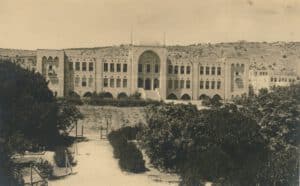
The completed Technion building at the beginning of the 1920s
First Technion Society (1923-1933)
Four years passed before the Technion was refurbished and ready for teaching. Only very limited funds were available for the most necessary renovation work to remedy the poor condition of the building at the beginning of the 1920s. In addition to the years of neglect during the First World War, not only the furnishings but also the laboratory utensils had been looted: During the British Mandate period, the ladies of the society are said to have used the glass chemical flasks to pickle their pimples.
In 1923, Albert Einstein visited the empty Technion building on his way back from a lecture tour in Japan. His ship anchored in Haifa, he had the architect Alexander Baerwald show him the building and, as a physicist, supported the plan to open an institute for technology and science in Haifa in the near future. After his return to Germany, he became president of the first Technion Society worldwide. Baerwald and Einstein knew each other from Berlin, where they had played chamber music together in a quartet; Einstein played the violin, Baerwald the cello. Einstein’s commitment consisted primarily in the establishment of a new “Society for a Technical Institute in Haifa”, which was notarized in his apartment in Berlin-Schöneberg, Haberlandstraße 5, on 17.04.1924. This first German Technion Society solicited donations for the Technion and customs concessions or exemption from customs duties for the shipment of furnishings. The global currency crisis led to a significant drop in donations. The donations therefore consisted mainly of practical items, such as technical instruments and furniture, in order to make the former building fully usable again.
The World Zionist Organization also provided a small budget, and in December 1924, the first students enrolled in architecture and civil engineering at the Technion. Female engineering students were among them right from the start.
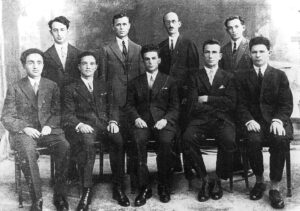
Albert Einstein headed this first German Technion Society until 1933. This period saw the opening of the Technion, the first successful years of teaching, but also repeated financial bottlenecks. In 1933, the society was banned, as were all associations and institutions that opposed those in power under National Socialism.
The university in Haifa had suffered great financial hardship in the early years, and the employees’ contracts were terminated on September 30, 1931. From then on, they continued to work without pay for of the students and the survival of the institute. The influx of many excellently trained engineers and technicians from Germany finally brought about a financial turnaround for the university, large donations were again made and the high tuition fees that had been introduced meanwhile could be waived.
Intermediate periods (1933-1981)
From 1933 onwards, Jewish professors from Central Europe increasingly sought refuge and employment at the Technion. The few departments at the time could only accommodate a small proportion of the scientists. Thanks to its distinguished European professors, the Technion was already a recognized scientific university at this time, even though it was not officially given this name until the founding of the State of Israel in 1948.

Proposals to take over Jewish professors from Europe in 1933
Prof. Sidney Goldstein, originally from England, founded the Faculty of Aeronautical Engineering back in 1949 and expanded it against all odds. Together with the engineers trained at the Technion, she helped the aircraft industry in Israel to flourish. Prof. Goldstein bundled academic regulations at the university into formal guiding principles of Western standards, which formed the basis for the academic development of the university.
At the beginning of the 1950s, Prime Minister David Ben-Gurion selects a 1.2 km2 area for the new Technion campus so that the university can adapt to the needs of the steadily increasing number of students. Foundation stones for the new buildings are laid on the saddle of Mount Carmel in 1953 and the number of faculty members rises to 206. During the 10-year term of office of President Gen. Dori, a faculty of science, a graduate school, the “Research and Development” department, which was transformed into a foundation, and numerous new engineering programs were established. Previously taught as courses, subjects such as mathematics, chemistry, physics, mechanics and agricultural engineering soon grew into their departments, and the American Technion Society, founded in 1954, wrung a promise from Prime Minister Ben-Gurion to receive an additional dollar from the Israeli state for every dollar donated to build the new campus. The other Technion companies worldwide were soon involved in this endeavor.
In the 1960s, the Technion opened its doors to hundreds of African and Asian students from developing countries and offered programs in English that led to a better economy with the help of the Ministry of Foreign Affairs and UN agencies in the respective countries. Meanwhile, the number of students, which had started with 16 new enrollments in 1924, grew to 1,973 in 1959 and 5,756 in 1973.
The Faculty of Medicine, which was opened in 1969, was associated with great expectations of fruitful cooperation between the engineering and medical faculties. These came to fruition decades later in the blossoming of medical technology and in the 2020s in the combination of artificial intelligence with the life and natural sciences.
A resumption of cooperation with Germany was out of the question for a long time: from 1956 onwards, the Technion’s Board of Governors was chaired by former judge Mosche Landau, an avowed opponent of Germany and the main prosecutor in the Eichmann trial. Under his presidency, the Technion, once a “German university”, was unable to establish official relations with Germany and German universities. There was no question of the Israeli side re-establishing a friends’ association. As the university president’s hands were tied, the then Vice President for Research at the Technion, Prof. Dr. Joseph Hagin, began to establish initial contacts with Germany in the 1970s. He paved the way for academic cooperation at the Federal Ministry of Education and Research (BMBF) in Bonn together with Ministerial Director von Hase and the Head of the Department of Physics at the University of Göttingen, Prof. Dr. Peter Haasen.
Re-founding of the Deutsche Technion Gesellschaft (1982-today)
The German Technion Society was only re-established in 1982 by Prof. Dr.-Ing. Eduard Pestel, then Minister of Science of Lower Saxony. Prof. Pestel, originally a professor of mechanics at the then Technical University of Hanover, visited the Technion in 1981 and was so enthusiastic about the idea of long-term cooperation that he asked his ministerial director responsible for universities, Dr. Christian Hodler, to re-establish the society, which had been banned in 1933. Dr. Hodler had already prepared a program for scientific cooperation between Lower Saxony and Israel in 1977, which enabled universities in Lower Saxony to carry out projects with the Hebrew University in Jerusalem with the help of funds from the “Niedersächsisches Vorab” of the Volkswagen Foundation administered by the Ministry of Culture (MWK). The program was extended to the Technion and the newly founded company was entrusted with the administration for the Israeli side. The founding meeting of the German Technion Society on March 30, 1982, was attended by prime ministers, university directors, business representatives and politicians.
In its statutes, the Deutsche Technion-Gesellschaft e.V. (DTG) describes its tasks as supporting the Technion and promoting teaching and research. This includes scientific and economic cooperation, as well as direct and indirect financial support. Student exchange programs that are not offered or funded by the state, but are helpful for teaching and research in both countries, have been developed, implemented and repeatedly evaluated by the DTG over the years.
Shortly after its re-establishment, the DTG launched the Umbrella Symposium. Since 1983, it has linked three excellent scientific institutions: RWTH Aachen University, Forschungszentrum Jülich and the Technion in Haifa. The then North Rhine-Westphalia Minister-President Rau was one of the most committed supporters of this cooperation. Symposia on changing topics are held annually at one of the three university locations, and since 2004 scientific cooperation applications have been supported with a start-up budget. In 2011, the 25th Umbrella Symposium in Aachen served as the main event of the first “German-Israeli Forum for Research Cooperation” (DIFF).

An Umbrella Symposium (Jülich)
In 1987, DTG set up a student fund to provide financial support for German students at the Technion and Technion students in Germany to study for one or two semesters as guest students.
With the establishment of the “Science Prize of the German Technion Society” in 2002, the DTG honors scientists from Germany and Israel who not only demonstrate outstanding scientific achievements, but also look back on intensive cooperation with colleagues from the other country. The biennial science awards were sponsored by Reinhard Frank and the Eduard Rhein Foundation until 2013; since then, the DTG has been responsible for organizing them itself.
With the opening of the office in Berlin in April 2003, the Technion became even more visible in Germany and a series of funding programs, exhibitions, and lecture series were established: In 2006, the first life science exchange students began their research internships in Haifa and Hanover. Master’s and PhD students from Leibniz University and Hannover Medical School in the field of life sciences spend 4–6 weeks conducting research in the Technion laboratory, while at the same time students from Haifa gain experience for their scientific careers in Germany. This program will support several hundred young scientists over the years with the help of the Reinhard Frank Foundation, private donors and industry funding. In 2021, the state of Lower Saxony will take over the program for all universities in Lower Saxony, all Israeli universities and the universities in the West Bank under the name ILSSE. This funding is independent of faculty and initially limited to 4-6 week research internships.
Since 2009, DTG has been offering delegation trips on various science and technology topics, as well as to the Israeli start-up scene and the high-tech industry. The trips are planned and accompanied by the DTG and include all relevant Technion departments, companies run by Technion alumni and departments of the Israeli high-tech industry run by Technion graduates. Since its re-establishment, the DTG has been providing individual advice for delegation trips to science, politics, and business.

A delegation of German mechanical engineers visits Stef Wertheimer
To intensify scientific cooperation between young scientists from Lower Saxony and Israel, the “Lower Saxony-Israeli Scientific Conferences” have been held in Hanover every other spring since 2013. Representatives from both states will present their current cooperation projects funded by the Lower Saxony MWK. The results of the work are widely discussed, and young scientists are provided with the opportunity to present their work at poster exhibitions and gain cooperation partners. The program is sponsored by the state of Lower Saxony, the Friends of LUH and various industry representatives.
In addition, the DTG offers conference scholarships and kickoff cooperation scholarships. The “YoungDTG” section will be set up for young scientists so that former and current scholarship holders can exchange ideas with each other on their platform.
To intensify scientific cooperation on highly topical issues, the DTG is sponsoring an annual “Green Photonics Symposium” from 2014-2016 with the help of the Reinhard Frank Foundation. The aim of the symposia, which are held alternately in Haifa and Berlin, is to bring together young academics and work together on highly topical strategic issues. From 2017, the focus will change to quantum physics. The symposia will take place in Würzburg, Haifa and Munich.
The Hasso Plattner Institute (HPI) has been working closely with the Technion in the fields of computer science and electrical engineering since 2009. Ten years later, the DTG takes over part of their administrative support, and the HPI continues to support up to 15 doctoral students from Haifa each year in the jointly established HPRC-Technion research school.
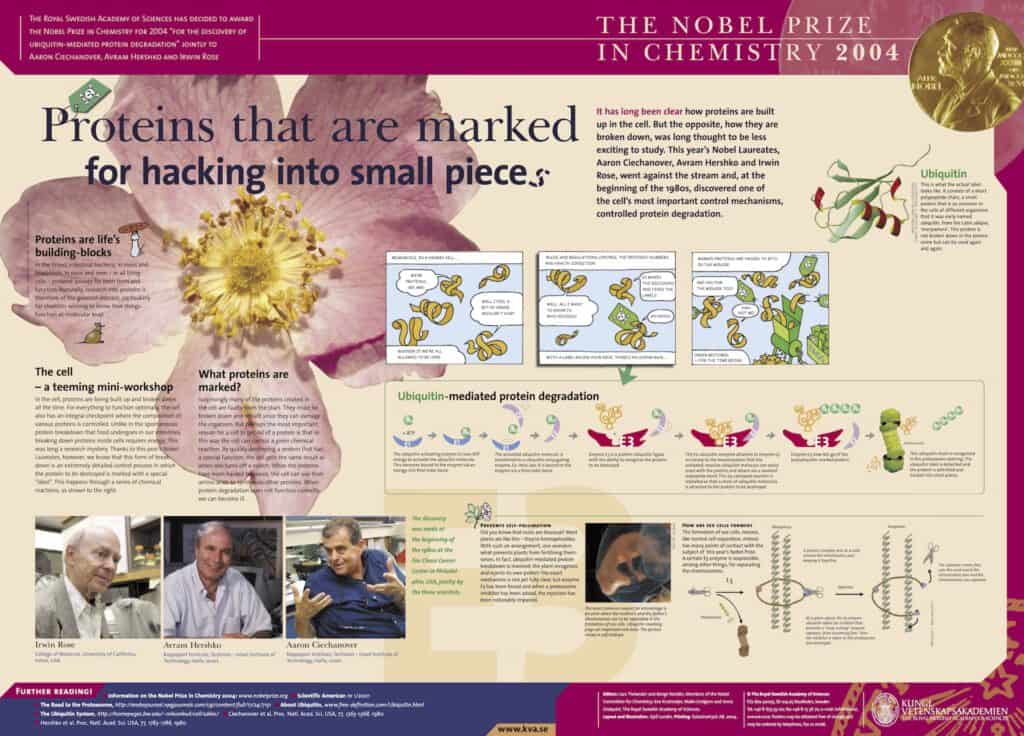
In recent decades, the Technion has expanded and intensified its research in its own country, opened branches in the USA and China and was awarded three Nobel Prizes for Technion professors in 2004 and 2011. The university was involved in the training or research collaborations of other Nobel Prize winners. Under the 10-year leadership of President Prof. Peretz Lavie, the university has forged numerous international links, both with scientific research institutes and in industrial research.
Since 2019, under the leadership of President Prof. Uri Sivan, the Technion has been undergoing a transformation from a traditional university to an interdisciplinary research institution covering all areas. After the successful combination of engineering sciences with the natural sciences and medicine in the 1970s and 1980s and their medical technology inventions, which still have an impact today, the focus is now on the connections between almost all disciplines and computer sciences. Cybersecurity and artificial intelligence are the two most important areas here. The Technion was opened in 1924 with the desire to build up its country, but also to develop research that would be useful and helpful worldwide. Even after 100 years, nothing has changed, the composition of students in Haifa has become even more international and the adaptation to ever important new topics promises an exciting future.